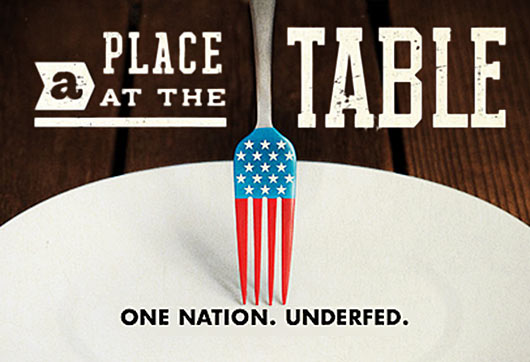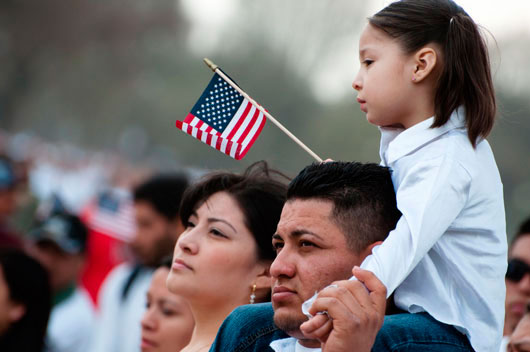
A Place at the Table is a documentary that hits home. Its tagline: One Nation. Underfed. sums it up, though it could just as easily be subtitled: One Nation, Overweight and Undernourished.
I first heard of the documentary a few months ago when the production company, Participant Media, contacted me to see if I would be interested in helping their awareness campaign. As a SNAP Alumni (a person who has been on Food Stamps, or what is now called Supplemental Nutritional Assistance Program) I agreed, because I believe— or rather, I know—that unemployment, divorce, illness, or a combination of those factors can lead any of us to poverty in the blink of an eye. It happened to me, and I never saw it coming. Few middle class working professionals envision themselves being unable to cover even the most basic expenses, like food for their children.
Last night, as I downloaded the documentary from iTunes, I realized that the $6.99 fee I paid would have seemed like a small fortune to me only four years ago. I would not have been able to watch it back then.
A Place at the Table depicts the personal struggles of families who are clearly poor—most appear to be born into poverty—but either not poor enough to qualify for Food Stamps, and therefore hungry, or they qualify but find that they can only buy cheap, over-processed foods to keep their kids’ tummies full longer. Some of these mothers have full-time jobs, but even at $9 an hour, they cannot make a decent living. A father tells of how he holds two full-time jobs: one from 9-5 and another from 5-11pm. And he still cannot feed his kids all of the time after bills are paid.
[youtube]http://www.youtube.com/watch?v=cgxxT4xpVNI[/youtube]
A Place at The Table raises many important and thorny questions. Why has the price of nutritious food risen by 40% in the last several years, while the price of junk food and empty calories has gone down by exactly that much in the same time? Why has the hunger crisis in America, first brought to the public light in the 60s by a TV documentary, actually gotten worse instead of better?
The documentary contains some grim statistics:
- 1 out of every 2 children in the U.S. will be eligible for Food Stamps at some point in their lives. That means there is a 50% chance of our own kids being on them (mine already have been).
- 50 million Americans don’t know where their next meal is coming from. They are “food insecure.”
Read Related: From Middle Class to Food Stamps: a Latina Mom’s Tale
America is a country that promotes self-sufficiency, which is a great thing, and prides itself on a legacy of helping others. As the plaque on the Statue of Liberty states:
Give me your tired, your poor,
Your huddled masses yearning to breathe free,
The wretched refuse of your teeming shore.
Send these, the homeless, tempest-tost to me,
I lift my lamp beside the golden door!
However, A Place at The Table rightly asks, “How are we treating these poor?” Actor Jeff Bridges, who appears in the film, states: “If another country were doing that to our children (keeping them underfed and malnourished), we’d be at war!”
By reducing the funds allocated to the SNAP program, more children are growing up with illnesses such as diabetes, and more money is spent on medical bills that in the end are costing society more than feeding our kids properly would. I didn’t need to watch the documentary to realize that something has to change, and soon. But I believe many people will come to this realization while watching A Place at the Table.
I did feel there was one thing lacking in the documentary: the story of a person who could be any of us, who never dreamed of finding herself on the SNAP waiting list or depending on charity to feed her kids. That point of view would perhaps increase awareness even further, as we tend to see “the poor” as being far removed from us. They aren’t. Look around you. It could be the single mom who finds it hard to smile when dropping off her kids at school, your next door neighbor, even your best friend. Or at some point, you.
Yes, there are those who abuse the SNAP system, but there are many more who would benefit from using it. Because when you can at least feed your children, you can spend more of your energy getting back on your feet, just as I and so many others have done after experiencing a rough spot in our lives.











